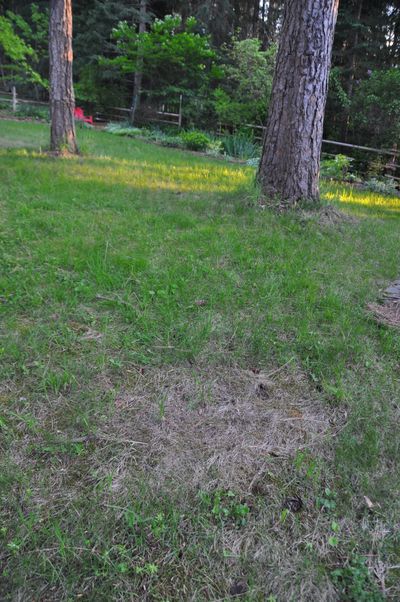Gardening: Lawns also suffered from longer period of winter weather

Our plants weren’t the only thing to get hammered by the winter and other weather conditions. Our lawns took a beating from several issues.
First, it took a long time for the soil to warm up enough to allow grass to sprout this spring. In some cases, the weeds got a head start on the grass.
There is nothing we can do about soil temperatures other than be patient and follow good lawn care regiments to ensure healthy turf once it gets warm enough. The heat a couple of weeks ago helped. Apply a good weed killer only in the areas where weeds are present. It is no longer good garden form to spray everything.
As I said in a recent column, some lawns were damaged by the quick change from last fall’s warm weather into November’s winter. This damage seems to be random and patchy, and might have been caused by the water in the crown and blades that froze killing the grass.
Snow mold may have also been a cause of dieback. The mold appears as pink- or gray-colored patches on lawn as the snow begins to melt off. The mold smothers grass blades, killing them and leaving bare open patches on the lawn.
This past winter was perfect for the development of the molds. We had snow on the ground for long periods followed by a long, slow warm-up. Adding to the issue, fall leaves had to be left on lawns because of the early snowfall. The debris cut off air circulation and increased moisture levels in the sod, creating a perfect environment. The mold dies out when the air temperature rises above 45 degrees, leaving the damage behind.
If your lawn suffered from damage, here are a few things you can do to prevent and repair it. First, practice good lawn care. While last fall was an aberration, remove leaves and needles off lawns promptly to reduce opportunities for molds to start. Use quality organic, slow-release fertilizers in the spring and the fall to provide the nitrogen needed to form healthy sod. Resist applying high-nitrogen fertilizers that overfeed the grass blades and do nothing to develop roots. A dark green lawn is not a healthy lawn. Water your lawn so it receives about an inch of water a week once the weather warms up. Set sprinklers to water longer and less frequently to get water deep in the soil. We are dry this spring, so get your systems up and running.
To control snow molds, walk your lawn as the snow melts and rake out visible patches of mold or areas where the grass blades have packed down to improve air circulation and help dry out the area. If you have repeated problems, apply a lawn fungicide in the fall around Thanksgiving. It does no good to apply it in the spring.
Reseed the areas left bare by the damage either now while it’s still cool or in mid-September.